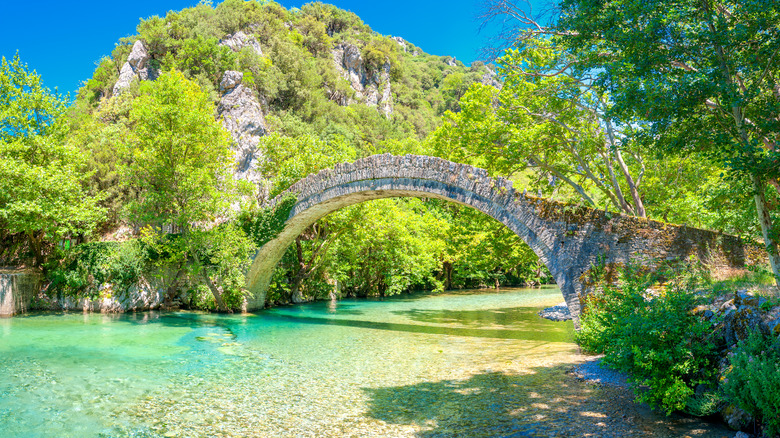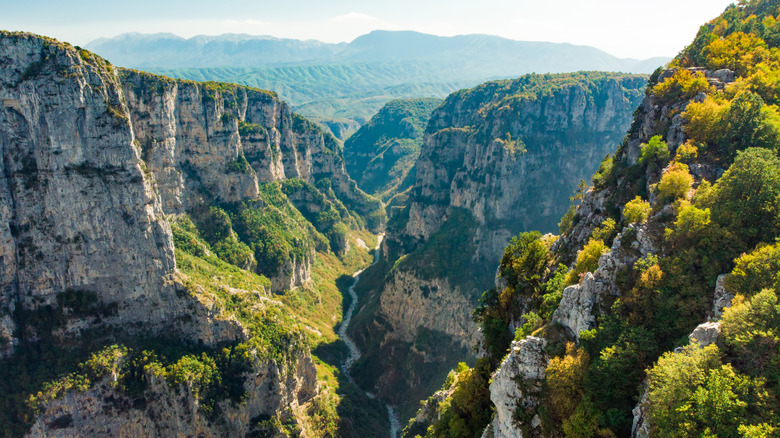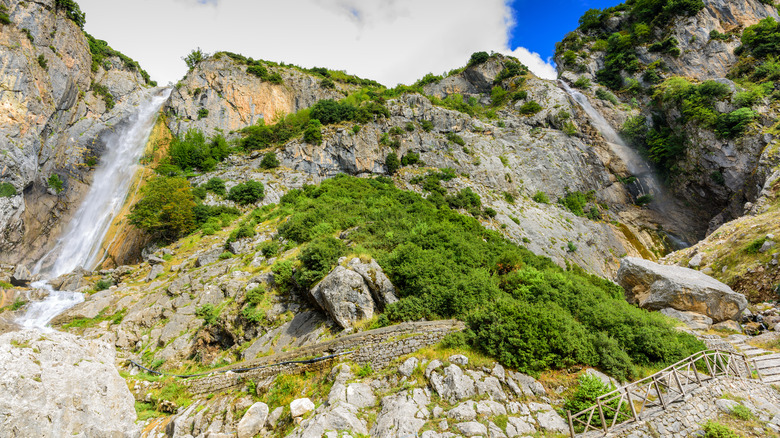Hikers Will Love This Picturesque Under-The-Radar Area Of Greece
A holiday in Greece never disappoints. While most travelers flock to the ruins of Athens or the turquoise seas that hug the Greek islands, there's a whole other side of this prized paradise you've probably never heard about. Northwest Greece is home to Epirus, a geographical medley of towering limestone mountains, canyons, forests, alpine lakes, caves, rivers, waterfalls, and the hallmark beaches that make Greece so famous. Sitting five hours north of the capital, Epirus easily rivals other well-known European hiker destinations like the Italian Dolomites or Georgia's Caucasus mountain range with a bounty of scenic trails for all levels.
Epirus has the best infrastructure for trekkers and outdoor enthusiasts in all the provinces of Greece. Wedged between the Ionian Sea and the Pindus mountains, Epirus spans 3,500 miles and seven subprovinces, though the most well-known areas for hikers are Zogori (short for Zagorohoria) and Tzoumerka. No matter where you decide to explore first, you can expect a rich landscape dotted with historic villages, monasteries, castles, and kamares — ancient stone bridges that arc over the waterways and look as though they were plucked straight from a Lord of the Rings film (Rivendell, the fictional home of the elves, springs to mind). In two words, Epirus is stunning and timeless.
The 'Grand Canyon of Greece' in Zagori
The Zagori subprovince is home to 46 villages and Vikos Gorge, the deepest gorge in the world, in Vikos-Aoös National Park. Over the course of millions of years, the Voidomatis River has been whittling away at the canyon and dividing the mountain in two at 3,300 feet deep. This is why it's often dubbed the "Grand Canyon of Greece."
This terrain is best explored on foot. Visitors can book a guided tour via Discover Greece for $76, which will take you through the gorge, two villages, and the Voidomatis Springs, known as the cleanest river in Europe. If you're an experienced hiker and prefer to go at your own pace, there's an advanced 8-mile hike from Monodendri to Vikos with staggering views of the canyon along the way.
For something more laid back, consider the Zagori Gardens Loop. This 3.4-mile easy trail starts and finishes in the traditional Greek town of Kipi, guiding you over four historic stone bridges for plenty of photo opportunities. The Plakidas Bridge has three arches, as though it's a caterpillar crossing the river. This majestic 18th-century monument is one of the most photographed bridges in Zagori.
The Twin Waterfalls of Tzoumerka
The subprovince of Tzoumerka is home to the northwest side of Mount Olympus, a landscape shrouded in legend and mystique, as well as a breathtaking gem worth adding to your bucket list — well, make that two gems. The twin waterfalls of Tzoumerka are the highest in Greece and stand at an impressive 285 and 328 feet tall, with the best action between October and June. You can see them up close by hiking a 4.3-mile trail from the village of Kataraktis to the base of the falls. Though they plunge over the mountain separately, the waterfalls are visible in one panoramic shot from the viewing platform and cafeteria near the trail's end. The area is well-marked for visitors and features wooden bridges with railings, only adding to the area's fairytale charm.
The best time to visit Epirus is from April to November, though keep in mind that the middle of the summer can bring intense heat. You're also most likely to encounter the most tourists during August, which is considered the peak month for travelers. For a relaxing, crowd-free vacation, consider visiting during the shoulder seasons. In the springtime, the wildflowers will be in full bloom, and the temperatures will still be comfortable enough for long hikes. In autumn, the leaves of the woodlands will turn red, yellow, and gold, bringing a whole new dimension to the landscape. With such a feast for the eyes, it is no wonder Epiris is often known as Greece's best-kept secret.


